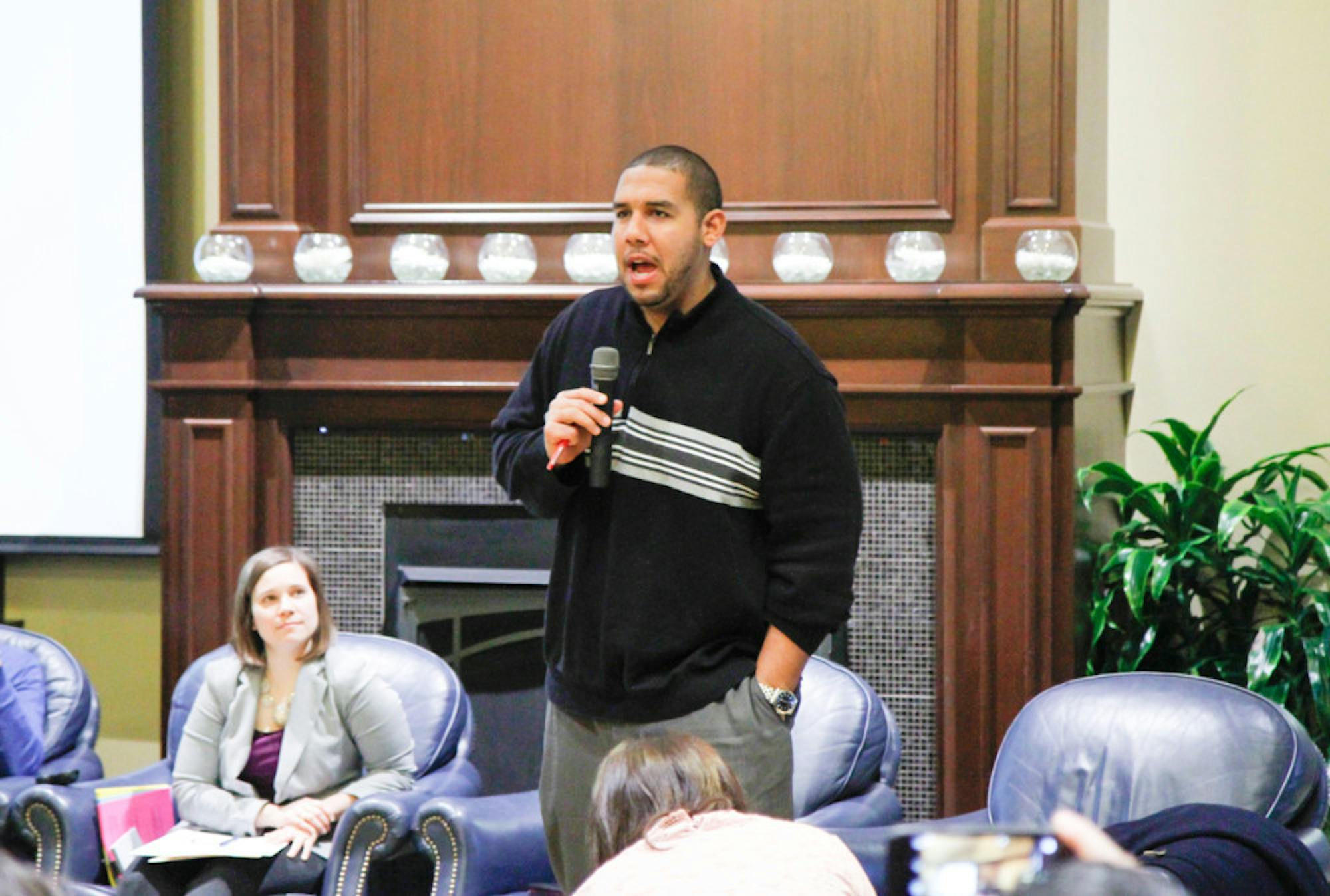
Emmet Farnan
Three panelists, Connie Adams, director of the Belles Against Violence Office (BAVO) at Saint Mary’s, Jordan Allison, a doctoral psychology intern at Notre Dame and Duke Preston, director of Football Player Development and Engagement at Notre Dame hosted a discussion Wednesday titled “Beyond the NFL: Unpacking a Culture of Violence.”
The dinner and discussion, held in Remick Commons of Carole Sandner Hall, aimed to create a dialogue and address the issues of domestic abuse in today’s society. The panel covered several topics ranging from abuse seen in the media and sports, such as the Ray Rice incident, and also the cyclical pattern and causes of abusive relationships.
“A lot of times athletics mandates power physically … there’s a great pressure on athletes to give the impression that they’re powerful and always in control,” Preston said.
Preston was a former NFL player for the Buffalo Bills, the Green Bay Packers and the Dallas Cowboys. During the discussion, he provided personal insight on his experience as a professional athlete and the power and influence that came with the career.
“In that environment [of the NFL] you have people at every turn trying to exhibit their dominance, worth and value,” Preston said. “I always thought I was pretty humble in my playing career, but I can remember walking around my house after a five-year NFL career ... and I remember thinking I wonder if my wife still thinks I’m as important as I was.”
Adams, who has a background specifically in social work and violence, talked about the complexities behind an abusive relationship.
“When we’re talking about any kind of relationship that’s abusive, we’re really looking at the imbalance of power and control in that relationship,” Adams said.
Adams said the development of abuse in a relationship is gradual, and many times, it begins with a subtle exertion of power in the beginning.
Allison used his professional experience to talk about the diagnostic treatment of abusers, as well as the psychological factors that come into play in an abusive relationship.
“With each escalation, there’s a transitional honeymoon phase where [the couple] is going back into that cycle where they try to make amends and go back to normal,” Allison said.
Allison dismissed assertions that since more abuse cases are made public, these statistics are indicative of men becoming more abusive. Allison said more cases are made public simply because more women have the courage to come forward.
“As we become more literate and well-versed we’ll have more women coming forward,” Allison said. “This doesn’t mean it didn’t happen beforehand, but there weren’t as many [resources] back then.”
Preston said a ripple effect occurs as more people come forward and inspire other people to share their stories.
“Up until 1990 or so … there was almost a courtesy that public figures didn’t air their dirty laundry in the media,” Preston said. “The exposure to issues like this is a helpful thing, and I think it gives people the courage to come forward.”













